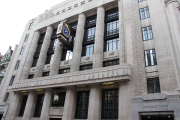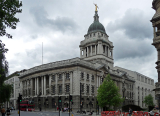
More than 11,000 native and foreign species currently thrive at the 320-acre Kew Gardens in west London. However, scientists warn that over half of these trees could
be at risk by the end of the century due to climate change.
English oak, beech, silver birch, and holly are among the species vulnerable to rising temperatures and prolonged dry spells. In response, Kew Gardens has started planting more species from warmer regions like southern Europe, Asia, and Central America. This shift means the iconic site will "certainly look different" in the future, according to one of its curators.
A new report, "Planting for the Future," identifies species such as fagres' fir, Iberian alder, cherry hackberry, and Montezuma's pine as likely to withstand projected climate conditions. Simon Toomer, curator for living collections at the Royal Botanic Gardens (RBG) Kew, told BBC News that while Kew Gardens will look different in 50-80 years, it will still be recognizable. He anticipates the introduction of novel species and drought-tolerant palms alongside familiar Mediterranean plants from the Victorian era.
Some native species, like oak and birch, may remain resilient if seeds are sourced from warmer, drier climates. RBG Kew scientists have already begun this work, making trips to countries like Romania and Serbia to collect seeds.
The report highlights the loss of over 400 trees at Kew Gardens during the drought of 2002, a significant increase from the average annual loss of about 30 trees. Scientists warn that such prolonged dry spells will become more frequent as global temperatures rise due to greenhouse gas emissions.
Using modeling that incorporates weather station data, climate projections, global tree data, and empirical testing, RBG Kew scientists estimate that 54% of trees at Kew could be vulnerable by 2090. However, additional modeling suggests a more optimistic scenario, with about a third of Kew's trees at risk. Notably, Kew's "Old Lions," five of the site's oldest trees, are expected to thrive in both scenarios.
RBG Kew emphasizes the "urgent need" for a national plan to protect UK landscapes by diversifying the plants selected for parks and urban spaces. Richard Barley, a director at RBG Kew, described the "succession plan" as a broad call to focus on resilience and adaptability to mitigate the severe impacts of climate change in urban spaces and gardens like Kew. Photo by Daniel Case, Wikimedia commons.







































